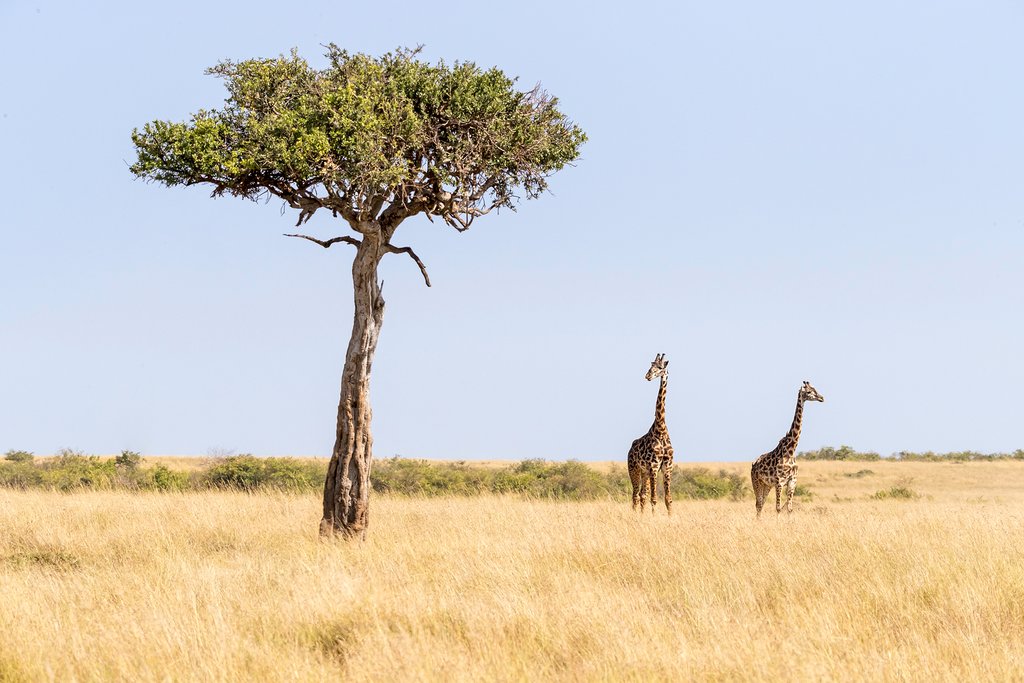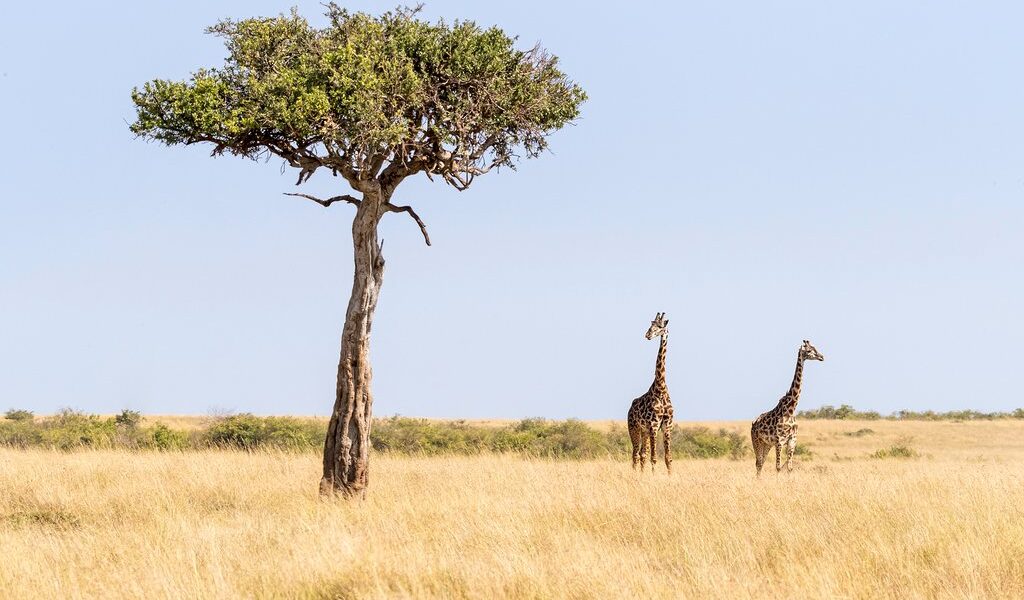
December is a wonderful time to visit Kenya—the weather is warm and reasonably dry yet the crowd sizes are still manageable, particularly at the beginning of the month. You’ll get some rain but it’s not constant, offering plenty of days to take a wildlife safari or stroll through the markets of Nairobi. Another great thing about this shoulder season is that prices are lower so you can find plenty of deals on hotels and airfare.
The weather in Kenya during the month of November presents a fascinating tapestry of conditions, a diverse mosaic that shifts dramatically depending on your location within this captivating East African nation. In the vibrant capital city of Nairobi, and across the central highlands that cradle it, November typically unfolds as a season of warm temperatures and intermittent rainfall, punctuated by refreshing cool nights. Meanwhile, along the sun-kissed coastline, near the bustling towns of Mombasa and Malindi, a different climatic story unfolds. Here, the weather remains consistently hot, a tropical embrace that persists around the clock, though the rainfall is somewhat less frequent than in the highlands.
Venture into the hills surrounding Hell’s Gate National Park, a dramatic landscape sculpted by volcanic activity, and other mountainous regions, and you will discover a climate that is decidedly cooler. In these elevated zones, the rain becomes a more constant companion, a steady drizzle that characterizes approximately 65 to 70% of the month, nourishing the lush vegetation that clings to the slopes.
In Nairobi, daytime temperatures typically range from a comfortable 73 to 80°F, accompanied by sporadic showers that dance across the landscape, interspersed with welcome stretches of dry, sun-drenched days. As night descends upon the capital, the temperature dips to a more temperate 60 to 65°F, offering a respite from the daytime warmth. On the southern shores of the Indian Ocean, in Mombasa, the weather follows a different rhythm. Here, temperatures consistently hover in the range of 80 to 92°F, a tropical heat that permeates the air, with evenings offering only a slight reprieve, remaining balmy at around 75°F.
The increase in rainfall during November brings with it an increase in the mosquito population. It is crucial to be prepared. Protect yourself against mosquito bites by packing effective bug spray. Do not forget other essentials such as sunscreen to shield yourself from the sun’s rays, protective clothing to guard against both sun and insects, and, most importantly, ensure you have access to an ample supply of water to stay hydrated.
Regarding the number of visitors, November presents an ideal travel window. The peak summer crowds have dissipated. School is back in session and the surge of holiday vacationers has yet to materialize. The onset of the rains also contributes to keeping visitor numbers relatively lower, creating a more relaxed atmosphere. Although November experiences slightly higher tourist activity compared to the quieter months of March or April, it remains a remarkably manageable time to visit, especially for those who cherish tranquility and wish to avoid large crowds. If you are someone who values a more secluded travel experience, you will undoubtedly appreciate the relative calm of November in Kenya. The Mombasa Carnival attracts a considerable number of tourists to the coast during that particular week, but aside from this event, visitor numbers are generally very reasonable.
The costs associated with traveling to Kenya in November mirror the pattern of crowd levels. It is generally less expensive than the peak summer months when hotels and airlines typically impose premium rates. Although it may not be as budget-friendly as the true off-season, November offers a sweet spot where you can potentially secure attractive deals if you dedicate some time to researching and comparing your options. With a little effort, you should be able to find some appealing offers.
Nairobi emerges as an excellent destination to explore during November. While rainfall is a factor, there are still numerous dry days to enjoy outdoor activities and explore the city. Moreover, even when it does rain, the showers are typically warm and of short duration, rarely disrupting your plans for long. The city boasts a rich cultural scene, brimming with museums and art galleries, offering an abundance of indoor activities to engage in during any unexpected downpours.
Many of Kenya’s renowned wildlife parks also present themselves as compelling choices during this time of year. However, remember to equip yourself with a reliable raincoat, as outdoor exploration will likely encounter some wet conditions. The vegetation tends to be denser during November, which can make wildlife sightings slightly less frequent. The increased availability of food sources means the animals don’t congregate as much as during the dry season.
Despite these considerations, the advantages of visiting during November often outweigh the challenges. There are significantly fewer tourists, the roads are generally passable, and the landscape is transformed into a vibrant tapestry of greenery, creating a more aesthetically pleasing environment. Furthermore, you won’t be subjected to the choking dust that often accompanies travel during the drier months. If this appeals to you, consider a visit to Maasai Mara, Samburu National Reserve, or Amboseli National Park. The latter offers breathtaking views of Mount Kilimanjaro, which are particularly stunning in November due to the absence of dust in the atmosphere.
Lake Nakuru is another destination at its best in November. This park is famous for its massive flocks of pink flamingos that gather along the lake’s edge, creating a breathtaking spectacle that offers unparalleled photo opportunities. The shorter grass makes it easier to observe these magnificent birds, and the temperatures are generally milder compared to other regions of Kenya. It is important to note that the favorable conditions at Lake Nakuru can sometimes lead to higher visitor numbers compared to other locations.
Generally, the beaches are not the best to explore this time of year. High rainfall makes it difficult to enjoy water-based activities such as snorkeling, swimming, surfing, and sea kayaking. Unless there is a compelling reason to visit the coastal regions of Kenya, it is best to avoid them in November.
While in Nairobi, immerse yourself in the vibrant atmosphere of Maasai Market, a treasure trove of handcrafted goods and souvenirs. Alternatively, delve into the rich history and culture of Kenya at the Nairobi National Museum, where exhibits showcase the nation’s diverse heritage. Art enthusiasts can explore the Banana Hill Art Gallery, a haven for contemporary Kenyan artwork. For a modern shopping experience, head to the Village Market, a stylish complex brimming with boutiques. Food lovers will find plenty of top-rated restaurants. Try Talisman, or Mama Oliech’s, where you can taste savory deep-fried fish from Lake Nakuru.
If your heart is set on witnessing Kenya’s extraordinary wildlife, consider booking a safari at any of the country’s incredible national parks and reserves. Observe zebras, elephants, giraffes, hippos, gazelles, and a myriad of other African animals in their natural habitat in Maasai Mara, Samburu National Reserve, or Amboseli National Park. Alternatively, venture to Lake Nakuru to witness the breathtaking sight of the pink flamingos that adorn the lake’s shores.
Another alluring option is to journey to the mountains. Explore the pristine landscapes of Mount Kenya National Park or the dramatic volcanic scenery of Hell’s Gate National Park. These parks will be cooler and wetter, but they will also leave you speechless. Mount Kenya, home to the country’s namesake mountain, boasts a landscape adorned with exquisite snow-capped peaks, including Batian, Nelion, and Lenana. Adventurous travelers can embark on a three-day trek to conquer the 17,057-foot summit. In Hell’s Gate, take a mountain biking tour through the dramatic volcanic gorges and rejuvenating hot springs.
The Mombasa Carnival, a spectacular annual event held in the coastal town of Mombasa, is an unforgettable experience. This festive celebration draws immense crowds to the vibrant event. It features parades, costumes, floats, music, art, and dance. Although the coastal region may experience some rain during this time, the carnival makes the region well worth visiting.
Another cultural event is the Maulid Festival. Lamu Island hosts a giant party in honor of the Prophet Mohammed’s birthday. It includes singing, dancing, food, and other celebrations. The event includes a massive procession on the final day to the tomb of Islamic religious figure Ali Habib Swaleh.
An itinerary to consider is the Kenya Wildlife Safari – 10 Days. This trip includes Amboseli National Park, Hell’s Gate National Park, Mount Longonot, Lake Nakuru, Lake Bogoria, and Maasai Mara. It begins with sightseeing in Nairobi before you head into nature.
B-1519

